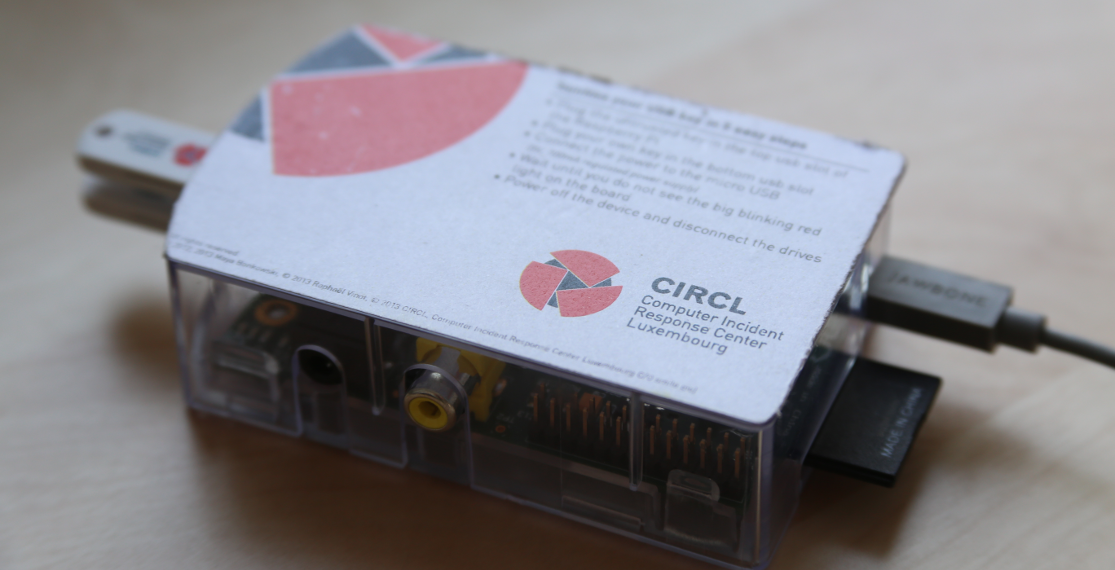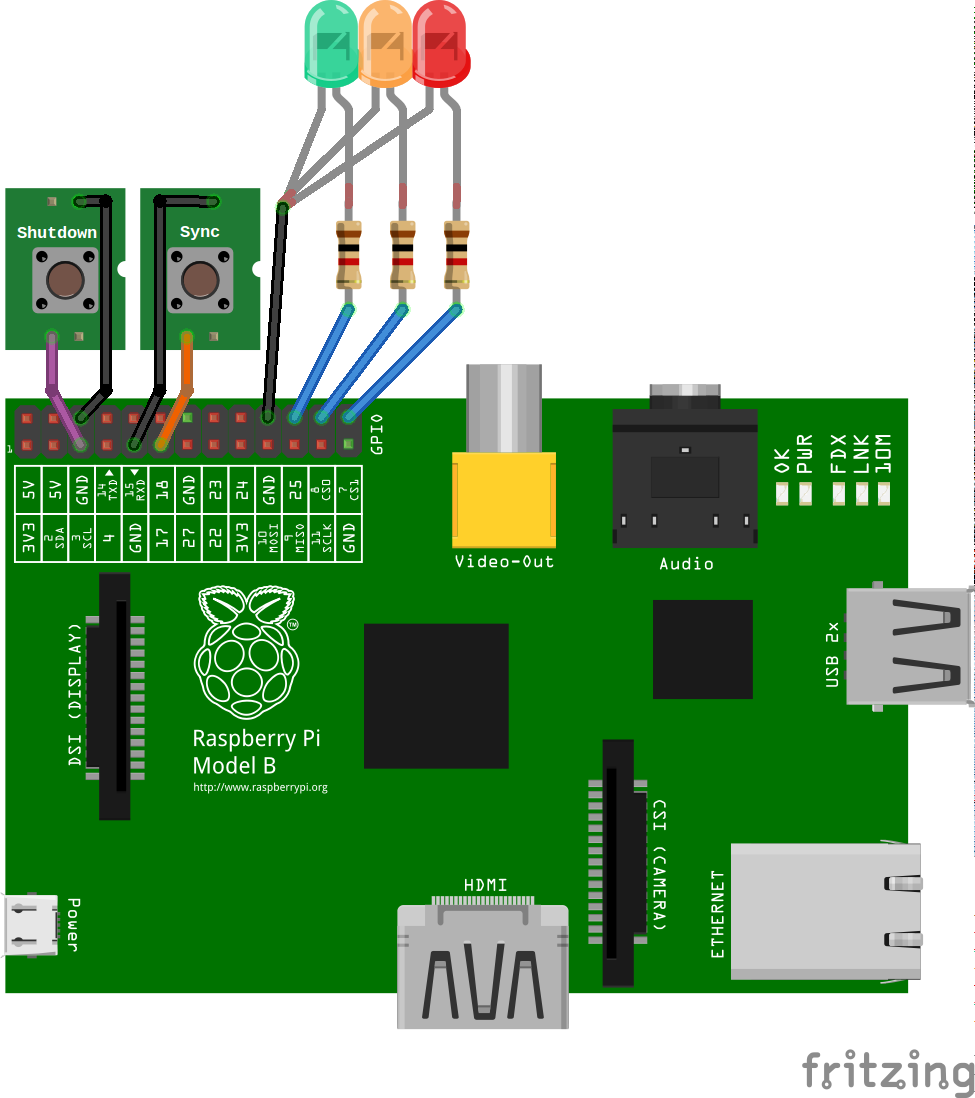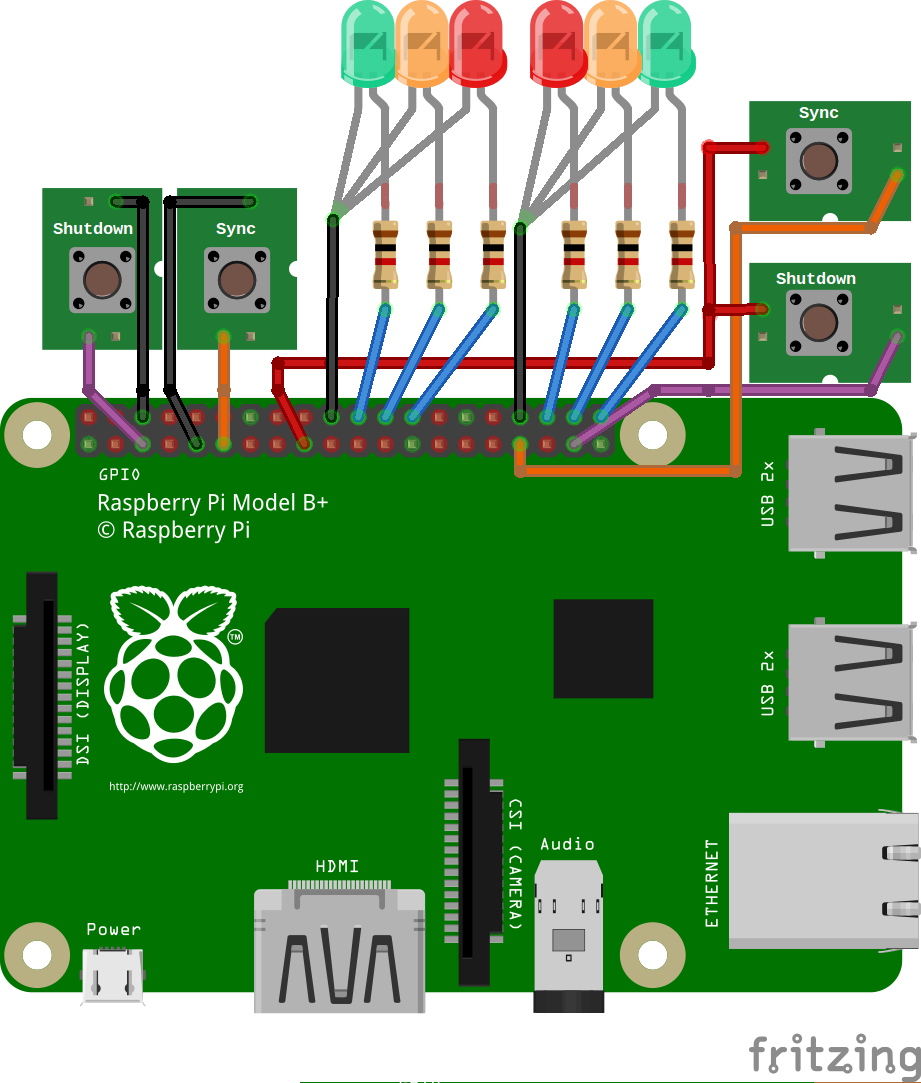- Support three LEDs (PiStop-Location A or china LED traffic lights, 26- and 40-pin GPIO supported)
- red (GPIO16 & GPIO7) ... source/bad USB-drive connected
- orange (GPIO8 & GPI20) ... Sync (Groomer) running (blinking means usb transmission ongoning)
- green (GPIO21 & GPI25) ... destination/good USB-drive connected
- Drop support for LED at GPIO4 (usally connected to 1-wire bus)
- Plays famous classic music Midi-files with CC-license (Mozart, Vivaldi, ...)
- Music stopps immediately after sync operation is finished
- Sync (Groomer) will start as service and not via rc.local
- Sync (Groomer) will start via F12-Key or GPIO input switch (26- and 40-pin GPIO supported)
- GPIO17 active low
- GPIO13 active high
- Shutdown and restart button (26-pin GPIO supported)
- GPIO3 (active low)
- Shutdown button (40-pin GPIO supported)
- GPIO26 (active high)
- Only shutdown after sync if USB-drives are connected on boot
- Performance optimisations (especially needed for Pi 1)
- Supports USB port 1.1 for source-drive (available if using USB-Hub/HAT used with Pi Zero or A)
- All Raspberry Pi variants (1-4) use top left usb-port for source-drive
- Compatible with GC2-xHAT (Left button sync, right button shutdown, traffic light)
Successfully tested:
- Pi 1 B Rev. 1
- Pi 2 B Rev. 1.1
- Pi 3 B Rev. 1.2
- Pi 3 A+ Rev. 1.0 with USB-Hub
- Pi Zero 1.3 with USB-HAT
- Pi 3 B+ Rev. 1.3
- Pi 4 B Rev. 1.1
- PiStop
- LED traffic lights
- GC2-xHAT
Download latest GC2 Image >19.09 from Releases. On Windows use Win32DiskImager or Rufus to write compressed image to SD card. On Linux use Etcher to write compressed image to SD card. The smallest possible SD card size is 4 GiB.
If you'd like to contribute to the project, see contributing.md. The images was created with Raspbian-Image-Generator/ pi-gen based on setup instructions.
Graphical how-to and pre-built image download.
To prepare the SD card on Windows, you can use Win32DiskImager. On linux/macOS, use dd (see the how-to link for instructions).
The current prebuilt image is based on the 1-11-17 release of Raspbian Jessie Lite. The smallest SD card that Circlean can fit on is currently 4GB.
If you'd like to contribute to the project or build the image yourself, see contributing.md and the setup instructions. This is a work in progress - contributions are welcome.
Question: I can't login, what is the password?
Answer GC2 version: The GC2 version uses the pi password 'sanitizer'. Onboard Wifi and SSH is deactivated only serial console can be used.
Answer old versions: For security reasons, it is not possible to login on the default image runinng CIRCLean/KittenGroomer (an attacker could exploit that functionality). The only thing the default image does is booting, processing the content of the source key, copying over the files to the destination key, and finally shutting down.
This project aims to be useful when you get/find a USB key that you can't trust, and you want to look at its contents without taking the risk of plugging it into your computer directly. The official project page can be found at [https://www.circl.lu/projects/CIRCLean/]
The Raspberry Pi Foundation has a blog post with more information about an older version of the project and details of the inspiration behind it.
CIRCLean is currently tested to work with USB keys that have FAT32, NTFS, or ext2/3/4 filesystems (ext* filesystems can only be used as source keys, not destination keys). Currently, exFAT is not supported due to lack of support for this format in pmount. The vast majority of USB keys will be FAT32 or NTFS.
The content of the untrusted key will be copied or/and converted to the second (blank) key following these rules (based on the mime type as determined by libmagic):
- Direct copy of:
- Plain text files (mime type: text/*)
- Audio files (mime type: audio/*)
- Video files (mime type: video/*)
- Example files (mime type: example/*)
- Multipart files (mime type: multipart/*)
- xml files, after being converted to text files
- Octet-stream files
- Copied after verification:
- Image files after verifying that they are not compression bombs (mime type: image/*)
- PDF files, after marking as dangerous if they contain malicious content
- msword|vnd.openxmlformats-officedocument.|vnd.ms-|vnd.oasis.opendocument*, after parsing with oletools/olefile and marking as dangerous if the parsing fails.
- Copied but marked as dangerous (DANGEROUS_filename_DANGEROUS)
- Message files (mime type: message/*)
- Model files (mime type: model/*)
- x-dosexec (executable)
- Compressed files (zip|x-rar|x-bzip2|x-lzip|x-lzma|x-lzop|x-xz|x-compress|x-gzip|x-tar|*compressed):
- Archives are unpacked, with the unpacking process stopped after 2 levels of archives to prevent archive bombs.
- The above rules are applied recursively to the unpacked files.
-
Power off the device and unplug all connections.
-
Plug the untrusted key in the top left USB slot of the Raspberry Pi.
-
Plug your own key in the bottom USB slot (or use any of the other slots if there are more than 2).
Note: This key should be bigger than the original one because any archives present on the source key will be expanded and copied.
3a. Optional: connect the HDMI cable to a screen to monitor the process.
3b. Optional GC2 version: Connect a LED on GPIO8 or GPIO20 (HIGH while programm is running)
3c. Optional: Connect Headpone or speaker to audio out (plays music while programm is running)
4. Connect the power to the micro USB port.
*Note*: Use a appropriate regulated power supply for your Raspberry Pi board (min. 5V, 1000mA+)
- Wait until you do not see any active/blinking GPIO8 or GPIO20 LED on the board, or if you connected the HDMI cable, check the screen or if you connected speaker wait until music stops. The process is slow and can take many minutes depending on how many document conversions take place.
- Power off the device and disconnect the drives.



